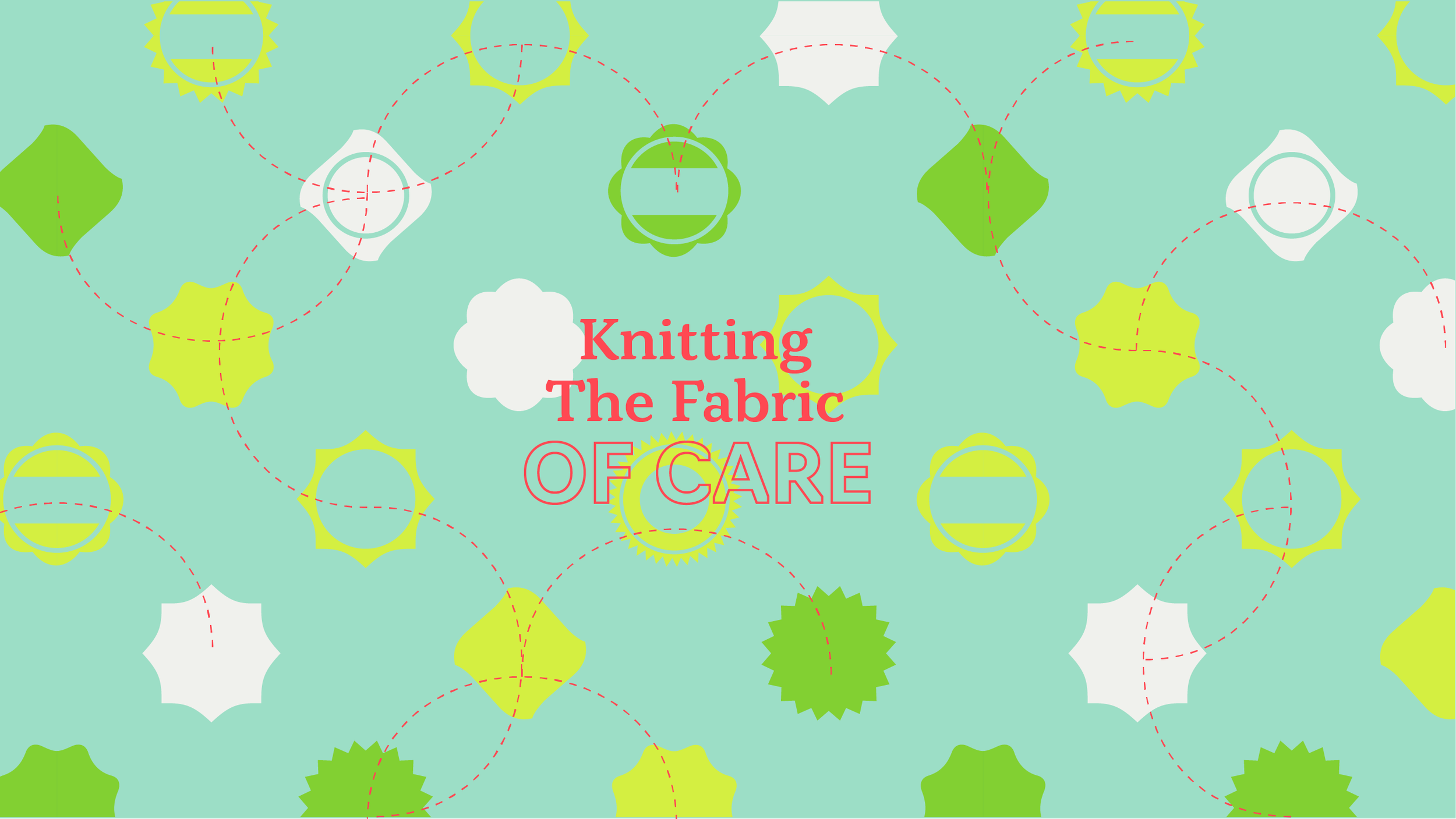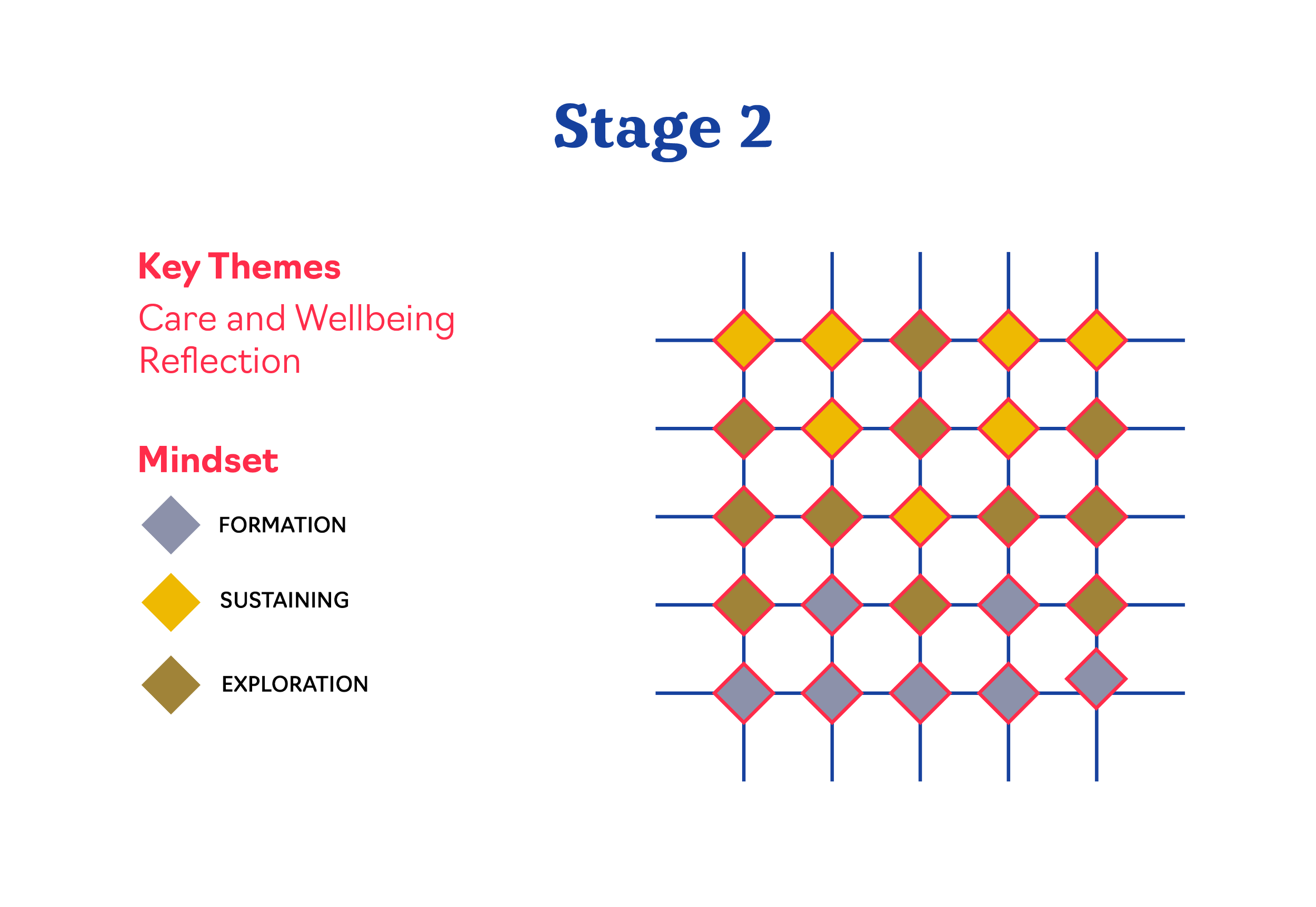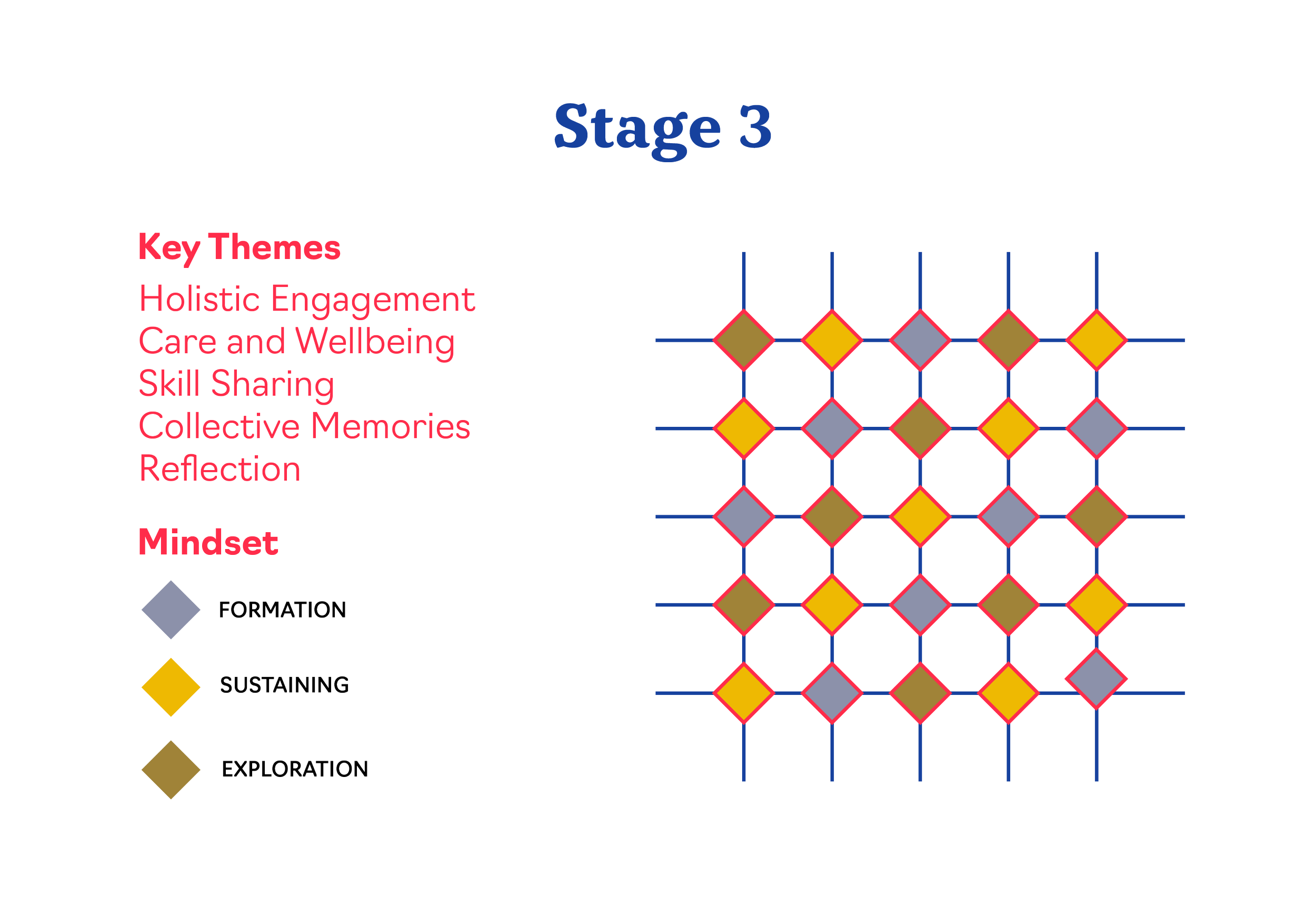Fostering a community of care is in many ways like knitting a textile. With the same tools, wool, and techniques you can make fabrics of varying shapes and sizes. In a comparable way, this playbook provides the “needles”, “yarn” and guidelines to “knit” a community of care. Following the same metaphor, just as a textile has two main components (threads and stitches that hold those threads together), a community of care is made of two main elements:
The Infrastructure
The Activities
The Threads
A constant set of dynamics that are always happening and set and maintain the foundations for a community of care.
The Stitches
A series of events through which the community comes together in diverse ways and generates bonding.
While the infrastructure tends to be more permanent and foundational, the activities are flexible, dynamic and adapt to the various stages of community building (just like how there are distinct kinds of stitches for the same thread of wool when knitting a sweater). Therefore, in the Activity Lab activities are made by a diverging combination of mindsets, themes, and operational characteristics that come together with your own creative input.
The Pathway to Community
The process aims to promote the evolution of a community from a centralized network to a decentralized one. What this means is that the beginning of the process will usually start out centralized around an individual or small set of people that want to form a community. Over time, They will work towards expanding beyond centralized dynamics to instead occur from a wide array of members of the community.
Stage 1 · At this stage, the community is just getting started. Most activities will be initiated by a small set of people that are looking to get the community started. They will usually occur in the same places and the focus is on meeting new people, sharing values and finding kindred spirits. Driving constant engagement and participation is key to consolidating a reliable group of people that will later become a community.
Key Things To Do:
Design Activities (Examples of Stage 1 Activities here)
Stage 2 · In this stage, a collective of individuals should have discovered shared interests, values, and beliefs that are pulling them together. More actors will be more proactive in the community and activities will be initiated by them. The key difference between stage 1 and 2 is that there is a higher degree of community ownership in the sense that participation is driven by a more diversified range of members. Furthermore, since in this stage there is a stronger sense of community identity it is also necessary to reach out to better include more members of the community.
Key Things To Do:
Design Activities (Examples of Stage 2 Activities here)
Stage 3 · This stage entails maintaining a community of care and reflecting on what has happened in your community so far. At this point, community members will share a strong feeling of kinship and belonging which allows for greater experimentation and a less structured approach to activity planning.
Key Things To Do:
Design Activities (Examples of Stage 3 Activities here)











